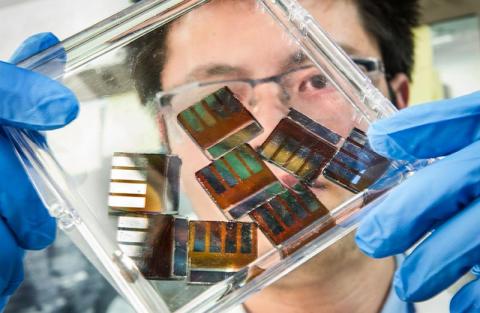Scientists at the U.S. Department of Energy's (DOE) National Renewable Energy Laboratory (NREL), in collaboration with researchers at Shanghai Jiao Tong University (SJTU), have reportedly devised a method to improve perovskite-based solar cells, making them more efficient and reliable with higher reproducibility.

The research was funded by the DOE's SunShot Initiative. It involved hybrid halide perovskite solar cells and revealed treating them with a specific solution of methyl ammonium bromide (MABr) would repair defects, improving efficiency. The scientists converted a low-quality perovskite film with pinholes and small grains into a high-quality film without pinholes and with large grains. This apparently boosted the efficiency of the perovskite film in converting sunlight to 19%, according to NREL.
This is why the scientists searched for a better method, using what is known as the Ostwald ripening process. The process involves small crystals dissolving and then redepositing onto larger crystals. The researchers were able to induce the Ostwald ripening process by treating the perovskite with a MABr solution. The amount of the solution proved key, as the ideal was proven to be about 2 milligrams per milliliter.
The researchers stated that using this process, different-sized nanocrystals formed with different film qualities could then grow into pinhole-free perovskite films with similar large crystal sizes. Thus, this new chemical approach enhances processing tolerance to the initial perovskite film quality and improves the reproducibility of device fabrication.
According to NREL, the improved film quality made the cells more stable. The perovskite cells treated with MABr were shown to be more efficient than those without the treatment. Untreated cells had an efficiency of about 14% to 17%, while cells treated with the MABr solution had an efficiency of more than 19%, the lab adds.